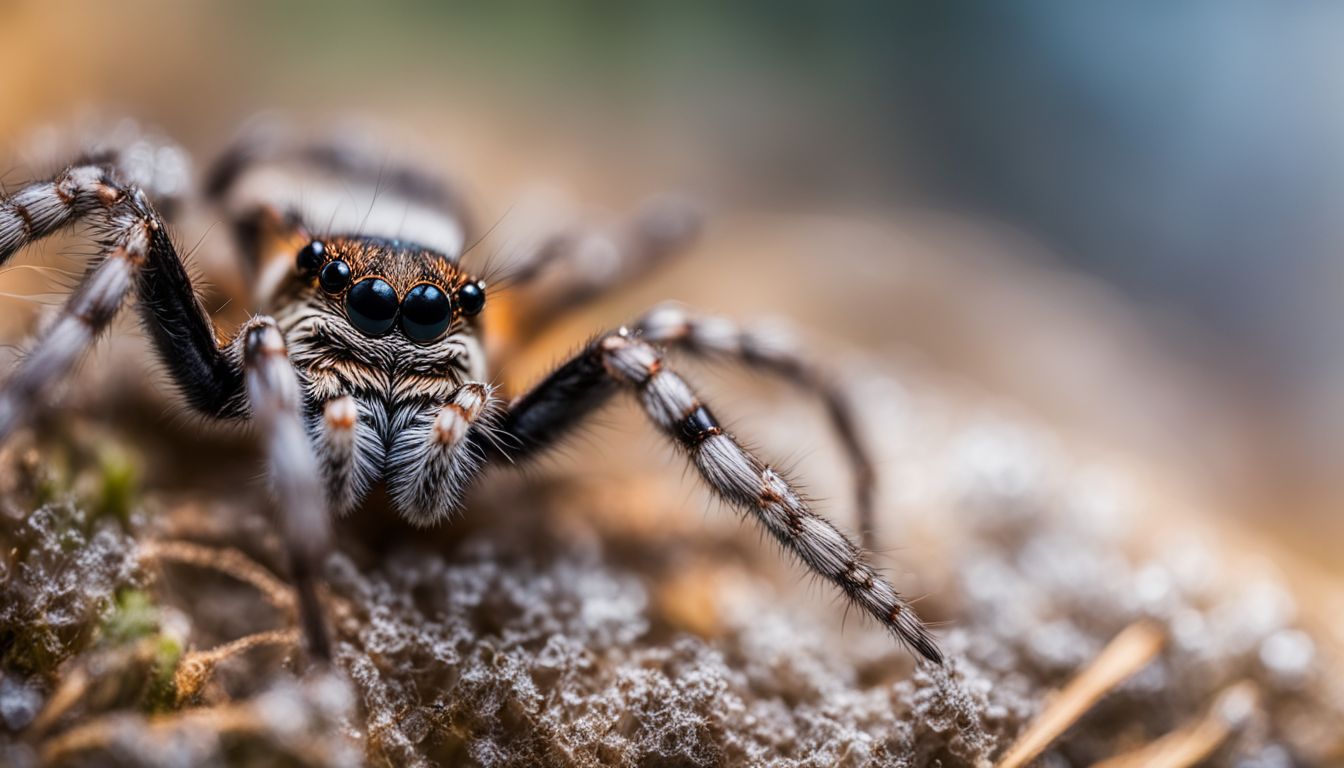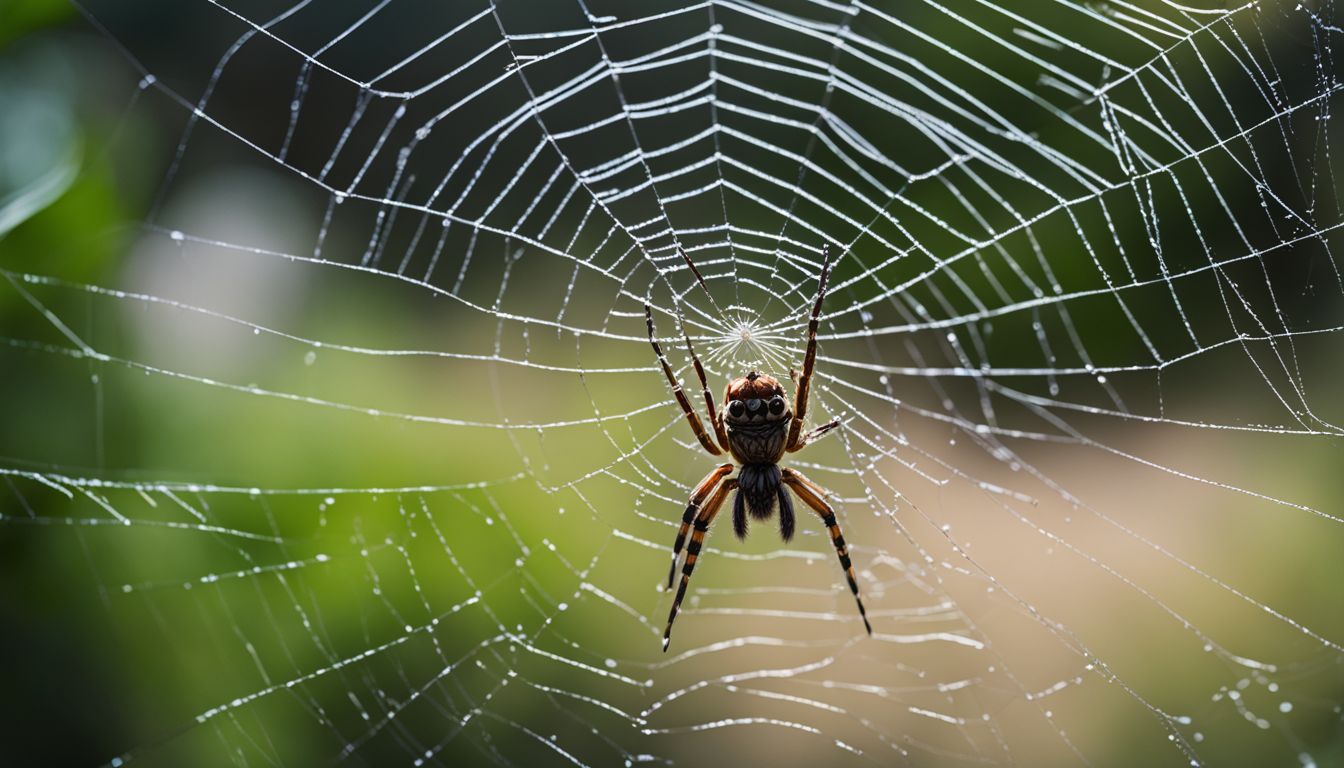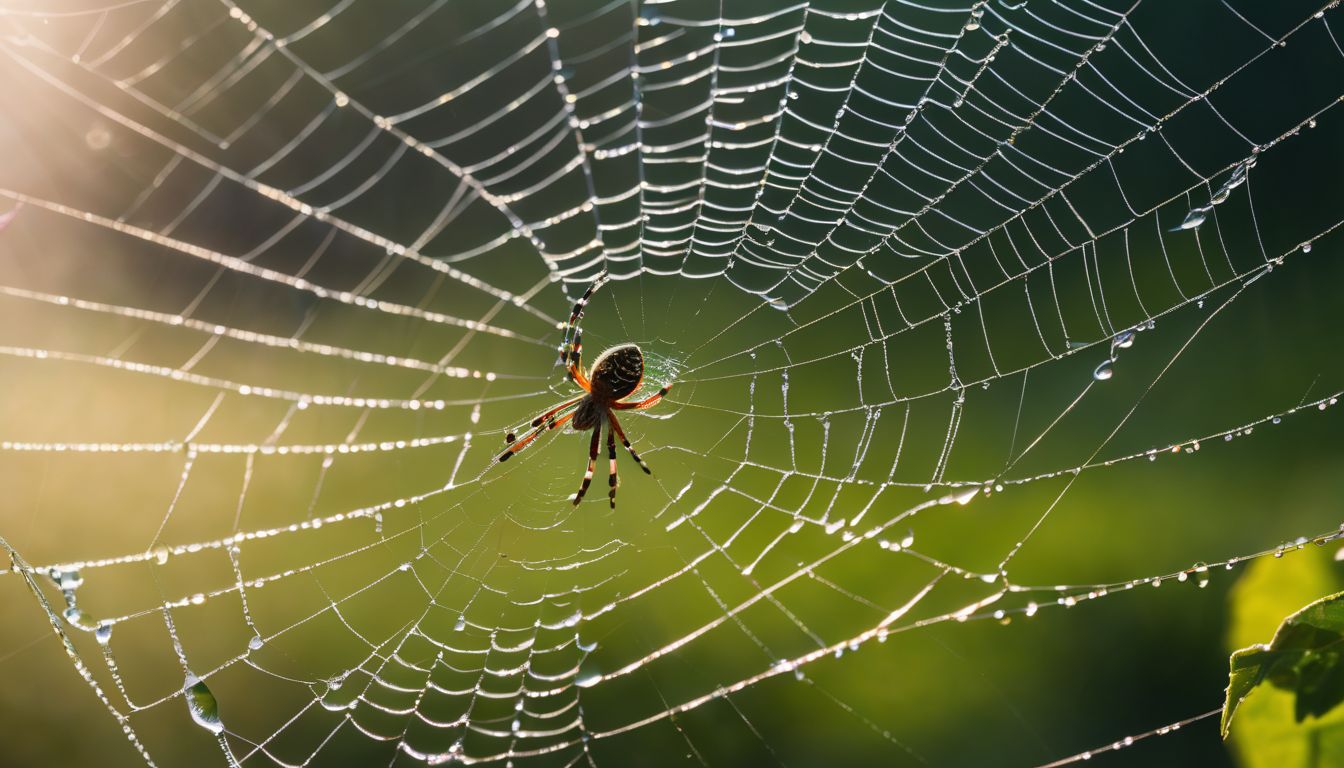Have you ever wondered if spiders can really sense danger like they show in superhero movies? Spiders really do have an amazing ability to detect threats thanks to their incredible senses.
Our blog post will unravel the truth about spider perception and what sets their danger radar off. Keep reading, it’s time to get amazed!
Key Takeaways
- Spiders can sense danger through their unique vision capabilities, the ability to feel vibrations through their webs, and the capacity to perceive sound waves without traditional eardrums.
- Jumping spiders, in particular, have exceptional eyesight that allows them to see color and clear images; they rely on this sense to hunt for prey and stay safe from threats.
- Spiders use specialized hairs and receptors on their bodies to detect low-level vibrations, enabling them to react swiftly and effectively to potential risks in their environment. These sensitive hairs contribute significantly to how spiders perceive and respond to threats in their daily lives.
The Myth of Spider-Sense: Separating Fact from Fiction

The concept of “Spider-Sense” in popular culture has often been exaggerated and distorted, leading to misconceptions about how spiders actually perceive their environment. Let’s explore the reality of spider perception and examine the truth behind these myths.
The concept of “Spider-Sense” in popular culture
Spider-Man, a famous hero, has an amazing skill called “spider-sense.” This special power warns him about danger before it happens. Fans and stories often talk about his spider-sense in different ways.
Some think Spider-Man should sense all types of threats while others like it when he only senses some dangers.
Movies and comics show Spider-Man using his spider-sense to dodge attacks and escape traps. His power is part of why people love him. In tales where he fights bad guys or swings from tall buildings, this ability keeps him safe.
It makes us wonder if real spiders can do something similar.
Now let’s explore how actual spiders notice their world around them.
How Spiders Perceive their Environment

Spiders have unique vision capabilities, can sense vibrations through their webs, and have the ability to hear without eardrums, allowing them to perceive their environment in fascinating ways.
Want to learn more about how spiders perceive danger? Keep reading to explore the reality of spider perception!
Spiders’ unique vision capabilities
Jumping spiders can see really well. They have two big eyes in the front that let them see things in color and very clearly. This helps them find and jump on their food just right.
Their sharp eyesight is better than all other spiders. Because of this, they are great at spotting their prey from a distance. Now let’s talk about how these amazing creatures feel vibrations through their webs to know what’s going on around them.
Sensing vibrations through webs
Spiders have a special skill to feel tiny shakes on their webs. These shakes can tell them about meals or danger nearby. Think of a spider web like a big net with silk strands that catch sounds and movements.
When something hits the web, like an insect trying to get free, the web moves. This sends signals along the strands right back to the spider.
The hairs on spiders’ legs are very good at feeling these waves in their web. They help spiders know what’s happening without having to see it with their eyes. If the web is tight and strong, it makes these signals even clearer for the spider.
Up next: Spiders also use another sense that’s quite amazing – they can hear without having ears!
Spiders’ ability to hear without eardrums
Spiders can sense sounds and vibrations through the tiny hairs on their legs. Recent studies have also shown that some spiders can even pick up airborne sounds, despite not having eardrums like humans.
This means they are able to detect potential threats or prey in their surroundings without traditional hearing organs.
Now, let’s delve into how spiders perceive danger and respond to threats in their environment.
The Reality of Spider Perception and Danger Detection
Analyzing spiders’ response to threats and the role of hairs and receptors in danger perception provides insight into how these creatures sense potential danger in their environment.
Understanding this aspect of spider behavior can shed light on their survival strategies and predatory instincts.
Analyzing spiders’ response to threats
Spiders can sense and react to threats, even though only a small percentage of them are actually dangerous. When spiders perceive something scary or gross, their size and potential threat level can affect how humans view them.
This means that bigger, scarier-looking spiders might make people feel more fear and disgust. Even though most spider species are harmless to humans, our emotions influence how we respond to them.
Using their sensory organs and receptors, spiders have the capability to detect dangerous situations accurately. Although it’s fascinating how they do this, it’s important for us to understand that most spiders aren’t as threatening as they may appear.
The role of hairs and receptors in danger perception
When analyzing spiders’ response to threats, it’s crucial to understand the role of hairs and receptors in danger perception. Spiders have specialized hairs on their bodies that help them sense low-level vibrations, aiding their ability to detect potential dangers in their environment.
These hairs also play a critical part in enabling spiders to perceive changes in their surroundings, allowing them to react swiftly and effectively to potential risks. The presence of these sensitive hairs and receptors is an essential aspect of how spiders perceive and respond to threats in their daily lives.
Diet and Perception: Do Jumping Spiders Eat Ants?
Jumping spiders are mainly insect-eaters. They sometimes add plant food to their insect diet. Research is ongoing on how jumping spiders perceive the world, including their preference for eating ants.
Jumping spiders have eight eyes and use silk for hunting and stealing prey from other spiders’ webs. Spiders, primarily predators of insects, occasionally eat plants alongside their insect prey.
Ongoing studies delve into how these creatures interact with the world around them, including their ability to sense danger and what they prefer to eat, such as ants.
Comparing Spider Perception to Human Senses
Spiders’ unique senses provide them with advantages in certain areas, while humans excel in others. Understanding the differences can give us a better appreciation for these fascinating creatures.
Understanding the limitations and advantages
Spiders have amazing vision and can feel vibrations through their webs. Their unique senses help them to hunt prey and stay safe from danger. But they don’t hear like we do, and their sense of smell is not as strong.
Jumping spiders have excellent eyesight, but they can’t hear sounds well. This means they rely more on what they see to find food. Each type of spider has its own strengths that help it survive in the wild.
Comparing Spider Perception to Human Senses
Conclusion
In conclusion, spiders have remarkable abilities to sense danger and perceive their environment. Their unique vision, web-sensing capabilities, and sensitivity to sound waves contribute to their keen perception.
Understanding spider perception could provide valuable insights into their behavior and survival strategies. Ongoing research on this topic promises exciting discoveries about these fascinating arachnids.
To learn more about the fascinating dietary choices of these arachnids, check out our article on whether jumping spiders eat ants.
FAQs
1. Can real spiders sense danger like Spiderman?
Yes, spiders can feel when trouble is near. They don’t have Spidey-senses like Peter Parker, but they do use vibrations in their webs to tell if something is coming.
2. Do all spiders know how to tell if there’s a threat?
Not all of them. Big ones like tarantulas might get goosebumps from sound waves or vibrations on the ground that warn them about predators.
3. Will a spider feel me coming before I see it?
Spiders may not see you first, but they could notice your steps shaking the ground or the air moving which tells them someone’s there.
4. Why do people talk about ‘Spidey-sense’ online a lot?
‘Spidey-sense’ became famous because of Spiderman movies and comics where he feels danger without seeing it – just like what fans chat about on Facebook, Twitter, and Reddit.
5. Are spider senses used for anything besides sensing danger?
Sure! Spiders also use their special senses to catch bugs for eating and to find out what’s going on around their spider webs.




